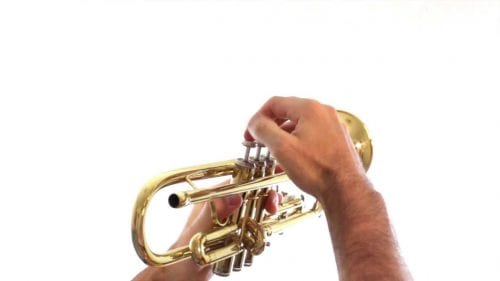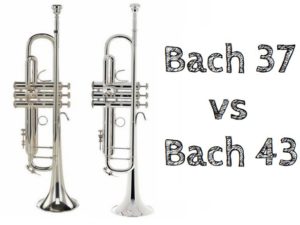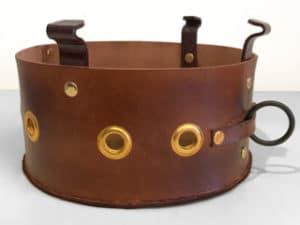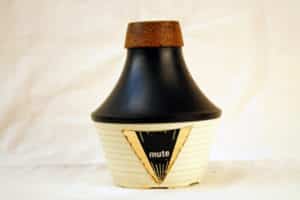Are you trying to learn how to play the trumpet and are seriously considering taking your first trumpet lesson? Then I can say: Congratulations on taking such a huge and positive step! While many people opt to simply attempt to learn to play on their own, taking lessons (whether with a class or via an individual session) is without doubt the easiest and most efficient way to learn and master the craft.
Before heading to your first trumpet lesson, there are some general things that you should learn about the basics of the instrument.
What is an embouchure?

If you want to learn to play the trumpet, it is essential to understand what precisely an embouchure is, and how exactly they develop. Due to the fact that everyone has individual teeth and lip shape, there are a number of embouchures you can develop and it should be noted that not one is right and not one is wrong; you simply have to find the one that feels the best to you.
However, there is a set of standard rules of which apply to the vast majority of them. For instance, you must ensure that you keep the corners of your mouth firm so that the air does not leak from there. And when going up in scales, it is generally a far better idea to push your lips more to the center as opposed to stretching them tighter, as stretching will thin out the lip tissue and will in turn risk damage to your lips, while additionally making the sound of the notes and scales seem significantly thinner.
See also: What makes a good embouchure?
Looking for a teacher?
Want to get lessons at the comfort of your own home? Check out the course Learn to Play the Trumpet: Beginner to Pro Made the Easy Way* on Udemy! (See their full trumpet course line-up here*!)
Trumpet embouchure tips
With the most commonly used embouchure, called Farkas, you should be sure that you keep your lips as even as possible. Striving to push your jaw out just a bit will help to get your teeth more in line. However there are even some embouchures that will require rolling or curling the lips in (Stevens) or out (Maggio), but it should be noted that they should not overlap.
As you begin to understand what your preferred embouchure is, you will note that you get a general sound from your instrument. A great way to begin to get familiar with your instrument is simply by striving to play longer tones, as this will allow you lips and facial muscles to get used to the sense of vibration and will allow you to learn and understand better how to achieve the desired note.
Your instructor will of course teach you a lot more on embouchure, this is simply a generalized set of information so that you can cue into the word and have a bit more knowledge when you start developing your embouchure.
You of course, must also have a general concept in understanding your mouthpiece. To start, it is most commonly recommended that you have as much of your lower lip as you have your upper lip on the mouthpiece; both should be evenly balanced on the mouthpiece.
There are most certainly individual differences in one’s teeth, lips and skull as a whole, so you should simply place the mouthpiece in the most comfortable and natural position for you.
If for any reason, you find that your mouthpiece is drastically more on either lip, it is highly recommended that you adjust it accordingly, so that it’s more in the center of your lips. If needed, it may even be advisable to have a little more of your upper lip than your lower lip on the mouthpiece, as your mouthpiece should be allowed to sit on the lower lip, ensuring minimum pressure is applied to the upper lip, which allows it to vibrate more freely.
Many beginner’s often question if dry lips or wet lips are the preferred method for playing, but both ways are correct. Dry lips stick to the mouthpiece and won’t slip. While to the contrary, wet lips slide underneath the mouthpiece, making adjustments easier.
Again, this is more often than not simply a matter of preference. Be sure to take the time to experience with both options to determine which one feels the best for you.
When is comes to breathing techniques, you should always take a full, deep breath prior to pressing your lips on the trumpet. Be sure not to lift shoulders upon inhale, but relax yourself completely while you breathing in, as opposed to tensing yourself up. And remember, never hold your air in, but inhale in tempo and blow instantly.
Playing posture
When you’re learning basics, your playing posture and how to hold the instrument are also very important. To start, never point the bell of your horn to the floor, though it is perfectly natural to have the instrument pointing slightly downwards, but not too much.
Remember to never lock your knees, and relax your shoulders, but do not slouch. Be sure to keep your arms a bit away from your body. Try and keep yourself in good physical condition as this will greatly assist both your posture as well as your breathing techniques.

To see the optimal posture vs. some common posture problems, check out this article on ResearchGate to see some images. It might take a while to have the proper posture ingrained, but it’s important to pay close attention to your form when you’re first starting out.
How to hold your instrument
When it comes to holding the instrument, whether you are right handed or left handed there is a proper method on how to do it:
Right Handed:
- With your thumb in between the 1st and 2nd valve casings or in front of 1st valve casing.
- Index, middle and ring-fingers should be to the valves (finger buttons).
- Your pinky finger should be on the hook (it is not recommended to hold your pinky in the hook in order to prevent excessive pressure).
Left Handed:
- With your thumb on the 1st valve slide (the majority of trumpets have a hook for your thumb).
- Index and middle fingers should be placed behind the 3rd valve casing.
- Your ring finger placed in the 3rd valve slide ring.
- Pinky finger under the 3rd valve slide.
Never hold your horn too tightly and remember to support its weight only with your left hand, as this will allow you to push the valves far more efficiently with your right hand.
And when it comes to how you press the valves, it is recommended that you do it straight down with the “cushions” of your fingers. If you repeatedly press them diagonally, it is highly likely that they will start jamming.
Be sure to always practice for at least 15 minutes per day, though an hour is the most recommended to truly allow your skill to grow and develop. Now you have all the basics and you are ready to start your first trumpet lesson!
Related Articles:
- 11 Famous Songs with Great Trumpet Parts
- The Best Trumpet Bucket Mutes (Buying Guide)
- How To Practice The Trumpet Quietly
- Bach 190S37 Review – An Anniversary Trumpet
- 3 Easy Ways To Remove A Stuck Mouthpiece (That ACTUALLWork!)
TrumpetHub.com is a participant of the Amazon Services LLC Associates Program, an affiliate advertising program. Links marked with an asterisk (*) are affiliate links. If you buy a product through an affiliate link, we will get a small commission without extra cost to you. This helps us earn an income off the free content we provide to you. Thank you for your support!



